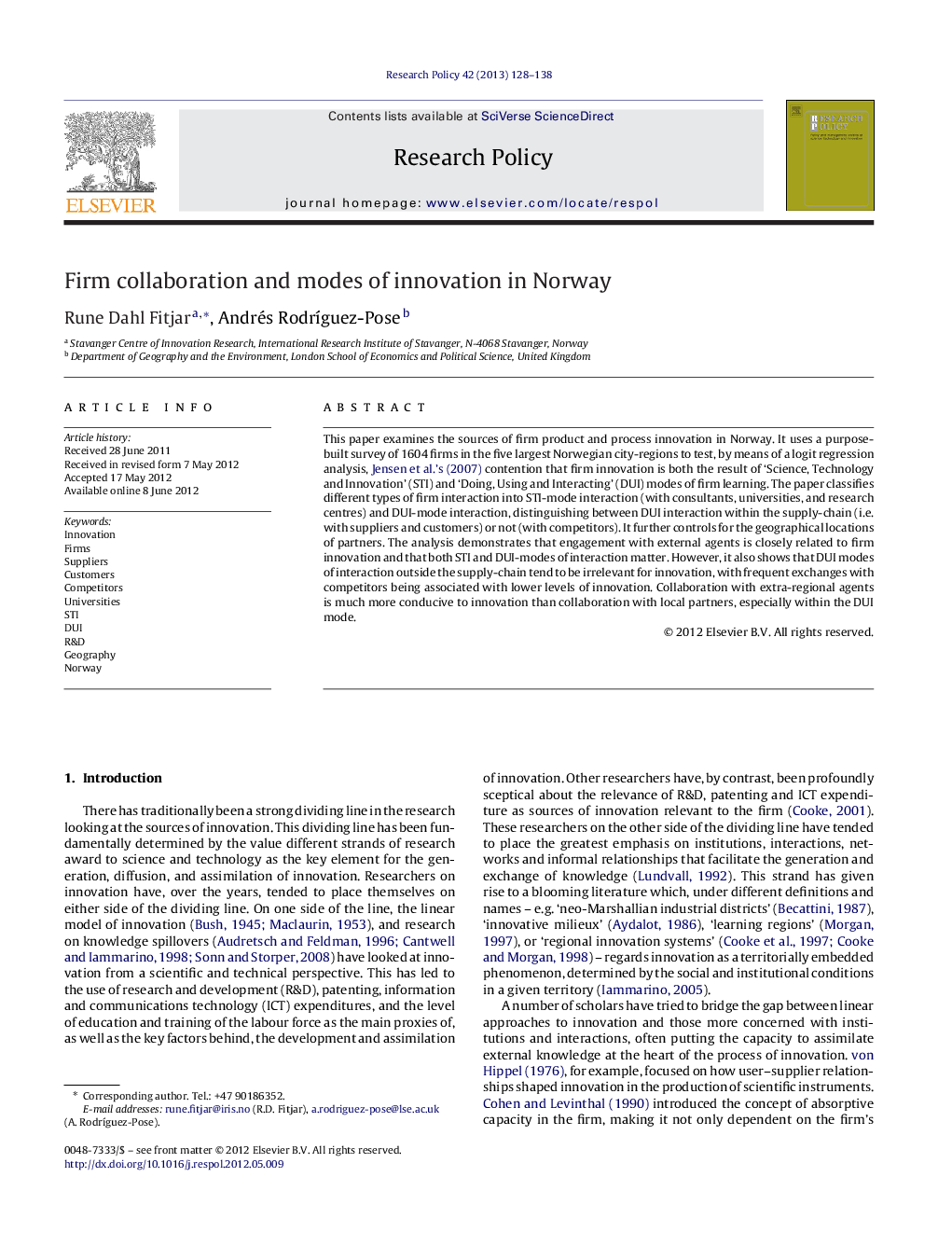| Article ID | Journal | Published Year | Pages | File Type |
|---|---|---|---|---|
| 984689 | Research Policy | 2013 | 11 Pages |
This paper examines the sources of firm product and process innovation in Norway. It uses a purpose-built survey of 1604 firms in the five largest Norwegian city-regions to test, by means of a logit regression analysis, Jensen et al.’s (2007) contention that firm innovation is both the result of ‘Science, Technology and Innovation’ (STI) and ‘Doing, Using and Interacting’ (DUI) modes of firm learning. The paper classifies different types of firm interaction into STI-mode interaction (with consultants, universities, and research centres) and DUI-mode interaction, distinguishing between DUI interaction within the supply-chain (i.e. with suppliers and customers) or not (with competitors). It further controls for the geographical locations of partners. The analysis demonstrates that engagement with external agents is closely related to firm innovation and that both STI and DUI-modes of interaction matter. However, it also shows that DUI modes of interaction outside the supply-chain tend to be irrelevant for innovation, with frequent exchanges with competitors being associated with lower levels of innovation. Collaboration with extra-regional agents is much more conducive to innovation than collaboration with local partners, especially within the DUI mode.
► In Norway, engagement with external agents is an important source of firm innovation. ► Both STI and DUI-modes of interaction matter for innovation. ► Interaction with suppliers and customers promotes innovation. ► But collaboration with competitors limits the propensity to innovate. ► Interaction with agents outside the region is a more important source of innovation than that at the local level.
